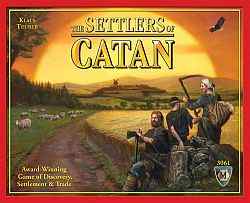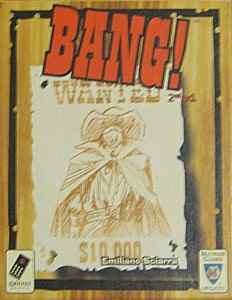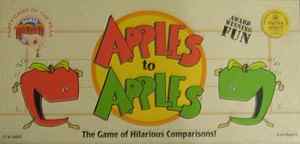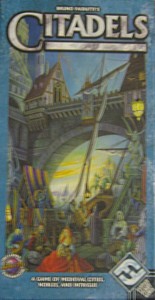A Selection of Board Games for Teenagers to Consider
You could argue that you can’t really select fun board games that appeal only to teenagers. In fact, I wouldn’t argue that the board games I’m going to describe here are targeted towards teens or are liked only by teens. That said, there do seem to be certain games or types of games that teenagers tend to gravitate towards. The board games I’ve chosen to tell you about below are such games in my experience and in the experience of others who have worked with and played games with teenagers.
Rebel Revolt
 Last chance to save the world – are you in? Rebel Revolt is a printable escape room kit that transforms your space into the staging ground for a daring mission.
Last chance to save the world – are you in? Rebel Revolt is a printable escape room kit that transforms your space into the staging ground for a daring mission.
This is more of an ‘immersive game experience’ than a board game. If you’ve ever played an escape room, then you’ll feel right at home with Rebel Revolt.
The game plays like you’d expect an escape room to run. Your team is presented with a challenge (in this case, sabotage the W.A.R facility), and you’ll need to solve a series of puzzles in order to complete it.
The puzzles in this game are fun, varied, and thematic – a great twist being that each player has to ‘take the lead’ at different points in the game. So not only does it make sure that everyone stays involved, but it can also incorporate a level of role-playing (or not – whatever you’re comfortable with).
This is clearly a group game, and it can scale to fit a group of literally any size, so nobody is left out. As more of an immersive experience than a simple board game, Rebel Revolt is a guaranteed hit at youth events (like this one, for example).
If you’re looking for something a little different, Rebel Revolt may be right up your alley.
Check out the Rebel Revolt escape room kit here
Werewolves of Miller’s Hollow
A board game doesn’t always have a physical board. Werewolf (technically, Werewolves of Miller’s Hollow
) barely has any playing equipment. There are a few specialty cards and a set of rules. But that’s sometimes all it takes to make a fun board game.
Werewolf works best with a large group of people. At least eight players are recommended, but it’s probably best with somewhere between 12 and 16.
A moderator, or game master, is chosen to coordinate the play. The moderator gives each player one character card. After checking the cards to see what abilities or characteristics they have, the moderator puts the town to sleep by saying “Night falls, the town is asleep, and everyone closes their eyes.”
Which they do.
The moderator then guides the characters through their options. When finished, everyone opens their eyes. The moderator reveals whom the werewolves have killed; that person is out of the game. The townsfolk then try to determine who the werewolf is. The player they accuse by majority finger-pointing is lynched and also removed from the game.
This goes on for as many rounds as needed until the townsfolk eliminate the werewolves, or the werewolves eliminate the townsfolk, or the lovers (if in play) are the last surviving pair.
Werewolf is a fun game if you like deduction, player interaction, and possibly (likely, actually) bluffing. You may have noticed a possible downside to this game: Every round, at least one player is eliminated. If you’re starting with a group of 12-16 players, the game will go on for quite a while with a few just sitting on the sidelines unable to participate. If they don’t mind, fine. When a few have been “killed”, they could start up their own fun board game as the rest finish the first one.
The Settlers of Catan
 The Settlers of Catan
The Settlers of Catan is one of those games that fits into so many categories that I almost feel that it shouldn’t be put into any specific one at all. However, since it is mentioned fairly often in lists of fun board games for teenagers, I’ll include it here.
Players try to control the fictional island of Catan by constructing settlements, cities, and roads. On a turn, you roll a pair of standard dice to determine which resources (lumber, brick, ore, grain, or wool) the island produces. Players collect these to build up their civilizations to get to ten victory points which wins the game.
There are several other facets to this board game (that I’m not going to delve into right now) which make it more enjoyable than I have portrayed here. One feature I will mention though is the bartering. I think it’s really this part of The Settlers of Catan that makes it so appealing to so many. You can trade resource cards with other players to get what the dice failed to give you and what you need to continue improving your situation. Trade well and, not only will you feel satisfaction in getting a good deal, you’ll likely win the game.
That’s not to say that trading is the only part of this board game for teenagers that guarantees a win, but it normally is a major component contributing to your success.
Bang!
 Bang!
Bang! is a card game that tries to recreate an old-fashioned (spaghetti) western shoot-out. Each player receives a character card assigning them special abilities and a role card, which must be kept secret (except for the sheriff) and which determines their goal.
Four different roles are available, each with its own victory condition:
- Sheriff – Kill all the outlaws and the renegade
- Deputy – Protect the sheriff and kill any outlaws
- Outlaw – Kill the sheriff
- Renegade – Be the last one standing
There are over 20 different types of cards in the deck. Most common are the “BANG!” cards, which let you shoot at another player, when your target is within range of your gun. The target player may be able to play a “MISSED!” card to dodge your shot.
Other cards can provide various benefits while in play. For example, there are several types of guns to improve your firing range. There are cards with special one-time effects to help you or hinder your opponents. For example, a Beer card to restores health, and you can hide behind Barrel cards during a shoot-out. A horse (card) is handy for keeping your distance from nasty neighbors, and the Winchester can hit a target from a long distance. The Gatling gun is a deadly addition to your hand because range doesn’t matter. It can only be used once, but it targets all other players at the table.
Speaking of other players, Bang! is probably the most fun when played with a full complement of seven people. If you can find a group who will really get into their respective roles, speaking and acting out their parts John Wayne or Fess Parker style, so much the better.
Apples to Apples
 Apples to Apples
Apples to Apples is another boardless board game. It consists only of two decks of cards: Things and Descriptions. One player, acting as judge, selects a Description card, and each other player tries to decide, from the cards in his hand, the Thing that best matches that Description. You must decide quickly though, because the last to choose doesn’t get to have his card thrown into the ring. The judge then chooses the Thing that appeals to him most – for whatever reason – and awards the card to the player who played it.
Due to the unusual combinations of Things and Descriptions that can be played, there are often humorous situations that need to be resolved. Pleading with the judge using a convincing (or non-sensical, your choice) argument can by just as hilarious. When a player has collected the pre-determined number of cards, that player wins.
Knowing other players’ likes and dislikes can be an advantage when deciding which card to play. Apples to Apples is one of those games that can also be used to learn about others’ tastes and distastes as well.
Shadows over Camelot
And now, back to another board game with an actual board.
In Shadows Over Camelot, each player takes on the role of a Knight, each with a special, “rule-breaking” ability. And there may be a traitor amongst them, as determined by randomly dealt cards.
The playing area is composed of four boards showing seven locations, or Quests, where Knights will move and which determine the actions available to the Knights. On his turn, a Knight must do one Evil action, then do one Good action. The Evil actions are 1) add a Siege Engine, 2) lose a Life point, and 3) draw a Black card. The Good actions are A) move to another location, B) perform a Quest action, C) play a White card, D) heal himself, and E) accuse a Knight of being the traitor.
Playing Shadows over Camelot pits the Knights against the game (and potential Traitor) itself. It’s important that the Knights cooperate in the Quests. Playing selfishly will almost certainly result in a loss. It’s not as important that you win a certain Quest or Relic, but that someone wins it. When it is appropriate for you to die (that is, lose your last Life point), you should do so willingly for the good of all!
Obviously interaction and teamwork are needed in this game. If there is a traitor involved, there will be a fair amount of bluffing going on too. I think it’s especially these aspects of the game that make it a fun board game for teenagers.
Citadels
And finally one more card game…with a few bits of gold and a crown thrown into the mix.
 In Citadels
In Citadels, there are numbered character cards, which are used round after round, and there are district cards which players try to accumulate for a win.
In each round, some of the character cards may be put aside (depending on the number of players) for all to see, and one more card is set aside face down. The player who is currently the King then secretly takes one character card from those remaining and passes the rest around the table, each player likewise secretly taking one. Then the characters are called in numerical order. If a player holds that character card, they take their turn.
When it is your turn, you can either take two gold coins or pick a new district card. After that, you can also build one district card by paying the cost in gold as shown on that card. Some cards add special abilities or provide extra income. Each character here also has a special, “rule-breaking” ability which the player may employ on his turn.
When one player has built his eighth district, that round is played out, and the game ends. Players score points equal the building cost of each of their district cards. Additionally, players may score bonus points, if they have built all five different colored districts, or if they have built eight districts. The player with the most points is the winner.
Citadels is all about making wise choices of characters and collecting enough gold to build your districts. Each character is useful at different times during the game.
If you have a group of four to six teenagers, this could easily become one of their favorite fun board games very quickly.
